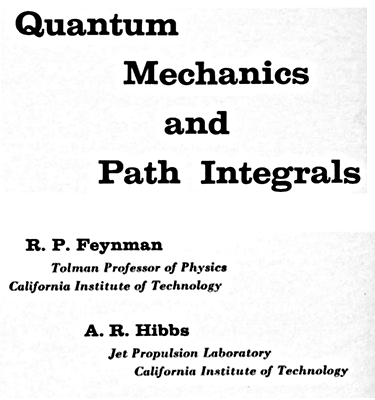
ファインマン経路積分の式 (6-98) は, ポテンシャル が時間 に依存しないときの「遷移振幅の2次の項」であった:
「遷移振幅の2次の項 」は, 問題 6-17 中の式 (6-74) に示されている:
また, は次の式 (6-78) であった:
更に, 「ダイソン級数の式」は次であった (J.J.Sakurai を参照のこと):
式 (6-98) を得るには, 上式 (6-74) の に を掛け合わせ とする.そして, 前式 (6-78) と「ダイソン級数の式」の第2項目を に利用する:
以上から,
上式で, 鍵カッコ内の項の符号を変えたものが式 (6-98) である:
この式 (6-98) 以降の原書の説明文は次のようになっている:
The first of the two terms in the last factor of this result has the same time dependence as we have seen in our first-order result. Therefore if the other term is neglected for a moment, we see that the net result would again be to make transitions to states where , with a probability proportional to . The probability per unit time is of the same form as Eq. (6-86) but with now given by
If we assume that the states lie in a continuum, the sum becomes an integral. Equation (6-99) is correct in the circumstance that it is impossible to go by first-order transition, impossible not only to the state but alse to any state of the same energy as the initial state. Under these circumstances for states such that . Then the second term in Eq. (6-98) is never large; for it cannot be large unless
is nearly zero, and then
in the numerator is zero. All the effects come from the first term, and Eq. (6-99) is correct. Furthermore, in the sum over in Eq. (6-98) there is no ambiguity at the pole where ; for the numerator vanishes at this same value of .
しかしながら, この文章の内容を考えると, 上記の青文字部分は次のように変更されるべきではないかと思われる !? :
Then the second term in Eq. (6-98) is never large; for it cannot be large unless is nearly zero, and then in the numerator is zero. All the effects come from the first term, and Eq. (6-99) is correct.


